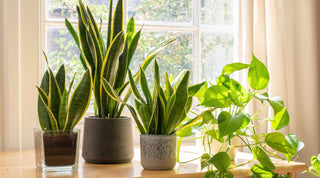Beyond its ornamental appeal, lavender can be transformed into a valuable product right in your own home - lavender oil.
Lavender, with its beautiful blooms and enchanting fragrance, is a favorite among gardeners. In this guide, we'll explore how to make homemade lavender oil from the lavender growing in your garden.
Choosing the Right Lavender
Selecting the Perfect Lavender Varieties
Not all lavender varieties are created equal when it comes to making essential oil. The best choices for lavender oil production are English Lavender (Lavandula angustifolia) and Lavandin (Lavandula x intermedia). These varieties have a high oil content and the perfect aroma for crafting lavender oil.
Harvesting Lavender
Timing is Everything
The key to producing high-quality lavender oil is harvesting at the right time. Wait until the lavender plants are in full bloom, typically in mid-summer. At this stage, the oil concentration in the flowers is at its peak.
Proper Harvesting Techniques
To harvest lavender, use sharp scissors or pruning shears. Cut the flower stems just above the leaves, leaving about a third of the stem intact. This ensures the plant can continue to grow and thrive.
Drying the Lavender
The Drying Process
After harvesting, it's time to dry the lavender flowers. Bundle the stems together and hang them upside down in a cool, dry, and dark place. This allows the essential oils to remain intact. Be patient; it may take a few weeks for the lavender to fully dry.
Preparing the Oil
Materials You'll Need
Gather the following materials:
- Dried lavender flowers
- A clean glass jar with a tight-fitting lid
- Carrier oil (jojoba, sweet almond, or olive oil work well)
- A dark, cool place for infusion
The Infusion Process
- Place the dried lavender flowers in the glass jar, filling it about halfway.
- Pour the carrier oil over the lavender until it covers the flowers completely.
- Seal the jar tightly.
- Store the jar in a cool, dark place for at least two weeks, shaking it gently every day to help with infusion.
Straining and Storing
Filtering Your Lavender Oil
After two weeks, strain the oil through a fine mesh strainer or cheesecloth into a clean glass container. Squeeze the lavender flowers to extract any remaining oil.
Proper Storage
Store your homemade lavender oil in a dark glass container with a tight-fitting lid. This will help preserve its freshness. Keep it in a cool, dark place away from direct sunlight.
Utilizing Lavender Oil
Ways to Use Your Homemade Lavender Oil
Lavender oil has a multitude of uses:
- Aromatherapy: Add a few drops to a diffuser for a calming atmosphere.
- Massage: Mix with a carrier oil for a soothing massage oil.
- Skin Care: Apply diluted lavender oil to your skin for its moisturizing and soothing properties.
- Hair Care: Add a few drops to your shampoo or conditioner for healthier hair.
Conclusion
Making homemade lavender oil from your garden's lavender is a rewarding endeavor that allows you to harness the essence of this beautiful herb. By following these steps, you can enjoy the numerous benefits of lavender oil, all while reveling in the satisfaction of a DIY project well done. Happy gardening and crafting!



